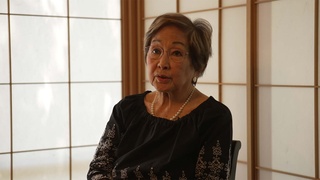Interviews
Iron discipline at home (Spanish)
(Spanish) My mother walked in the shadow of my father; she always had to do what he said. At times this bothered me, but it was his way. I remember…look at how the Japanese were at that time. Fathers were like that with their wives and with their children. Did the children eat with the adults? You could not eat with your parents in the dining room, nor be a nuisance. You had to eat somewhere else with the other children and with the employees, but the adults sat around the main table. This dreadful tradition that…
But I remember that afternoon when my father was dying, he said, “Filo, Filo,” calling my mother. “I want to entrust you with something, remember” – he said so tiredly – “that Venancio must always stay in school, he should always study.” Why did he say such a thing? (Venancio cries while remembering) I recall…please forgive my show of emotion…I have many things, these things, I am very sentimental, they shock me and [then] it makes me cry, I get angry but I am like that, now more than ever…all right, I want to continue.
I remember when my father said that I should finish school, my mother went to the side of the bed and said, “Listen here, what are you thinking? This child is mine too. Of course, he is going to finish his studies; you don’t have to tell me.” It was the first time in my life that I heard my mother answer my father in that way. I didn’t know how to react. I was in the main room and she was over here, and my father’s body was there, and my mother was shouting. I said, “Wow, what happened to my mother!?” A few hours later my father died.
Date: September 6, 2007
Location: Lima, Peru
Interviewer: Harumi Nako
Contributed by: Asociación Peruano Japonesa (APJ)

